
In the world of Nikon vintage lenses, besides the classifications based on focal length, maximum aperture and special names(such as the Afghan girl lens), other common groups have different labels such as “Ai”, “Ai-S” and “non-Ai”. Generally speaking, second hand lenses would have different price tags depending on these labels, and there is also the saying that “digital cameras can’t be paired with non-Ai lenses”. Therefore these knowledge are essential to people who use second hand Nikon lenses.
But what do these labels mean, and how does it affect the way we use vintage lenses? Please read on.
Modern lenses have electrical contacts on it that allow a camera to read the relevant information of the lens, including its focal length, maximum aperture and such. Therefore when the camera is set in aperture mode(aperture prioritized), the camera will automatically read the current aperture setting of the lens and calculate the most suitable shutter speed. However, ancient film cameras do not come with such advanced features such as electrical contacts, and everything relies on the camera’s mechanical structure to transfer the information of the lens to the camera itself. Therefore allowing the camera to “read” the current aperture setting of a lens is the most important objective when designing a single-lens reflex camera.

Image above: the Afghan girl lens, supposedly the lens(Nikon 105mm f2.5 Ai) used to take the iconic National Geographic cover “the Afghan Girl”
In order to solve this problem, each camera manufacturer came up with different mechanical structuring to indicate the aperture, allowing the user setting of the aperture to be read by cameras(vintage lens are all controlled by aperture rings), so that the camera can immediately determine if the current setting yields the correct exposure value. Most manufacturer’s camera body(ex. Canon) discarded these mechanical parts when the cameras are digitized, leaving Nikon to be the only large SLR company today that still has these vintage mechanisms. This means that Nikon cameras are compatible with most of its own vintage lenses, making it the most versatile choice of SLRs for lens players.
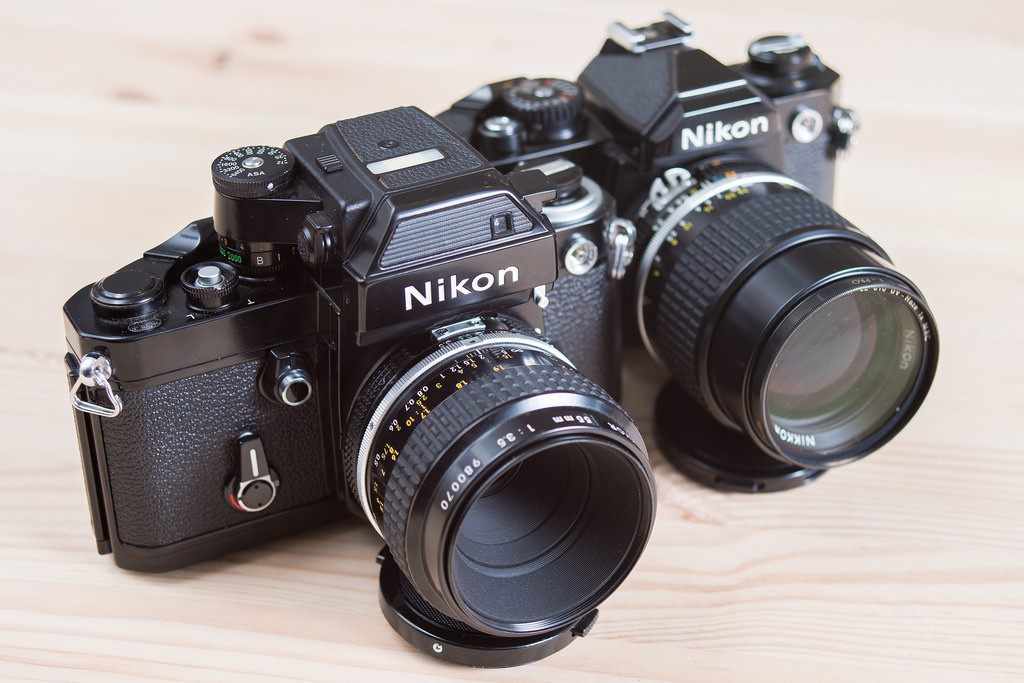
As of now, what Nikon uses for its aperture indicator is called “Ai(Aperture Indexing)”, even its newest DSLR releases retains this mechanism. However in the earlier days(before 1977), Nikon’s SLRs do not operate with this system, therefore lenses or camera bodies prior to the use of Ai are labeled “non-Ai” for the purpose of differentiation. The camera in the front in the above image is a rather early product of Nikon “F2SB”, and the one on the back is the immortal warrior “FM2”. These two are the early representative work from the Ai and non-Ai era, and we will be using them to demonstrate the difference between the two today.

First, let us find out what exactly Ai entails!
No matter if it is the body of an SLR(after F2), or Nikon’s current mid to high-grade DSLRs, you will be able to find a “rectangular tab” along the edge of the lens mount like in the image above(to the left of the lowercase n in Nikon), this tab can be rotated around the lens mount(feel free to try flicking it yourself). This device is the core of a camera’s Ai feature, by measuring the degree it rotates, the camera will be able to determine the value of the current aperture setting, it is a smart and useful design. Modern-day DSLRs also use this method to determine the current aperture of the camera when mounted with a vintage manual lens, the same as 38 years ago.
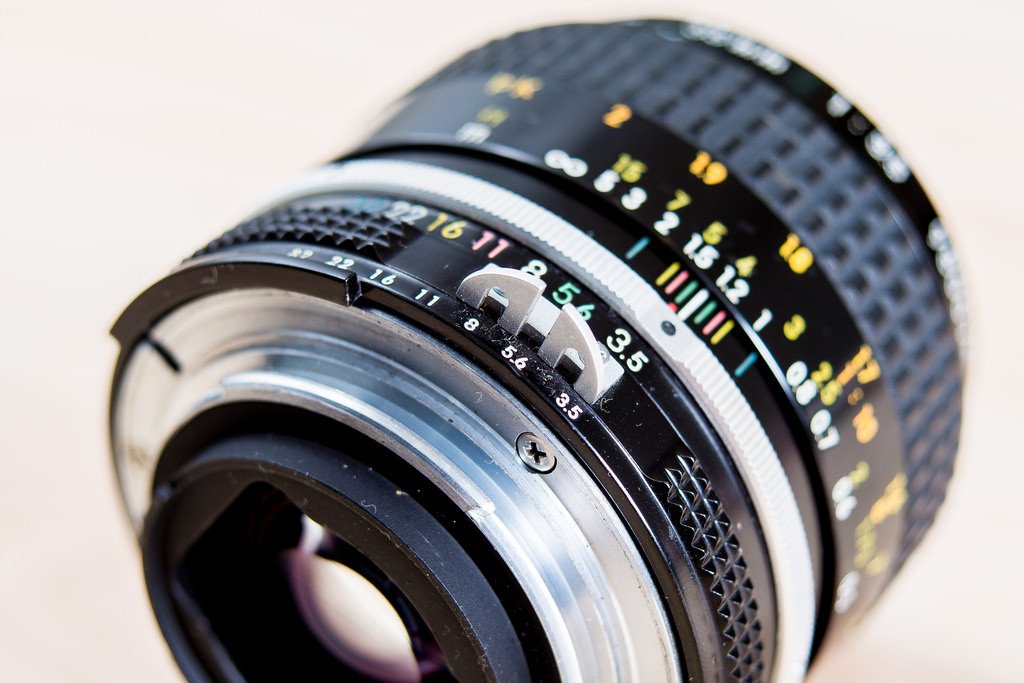
Since the position of the tab can be adjusted, there must be a design on the lens that allows you to do so. In the image above right beside the lens mount, there is also a black protrusion right under the small white “16”, which is the “Ai” of the lens. When the lens is mounted onto a camera, this is the part on the lens that will be locked with the corresponding part on the lens mount, and as the mechanism is triggered when adjusting the aperture setting, the information will be transferred to the camera itself.

Image above: When the protrusions on the lens and the mount lock together, the camera will be able to know the current settings of the aperture
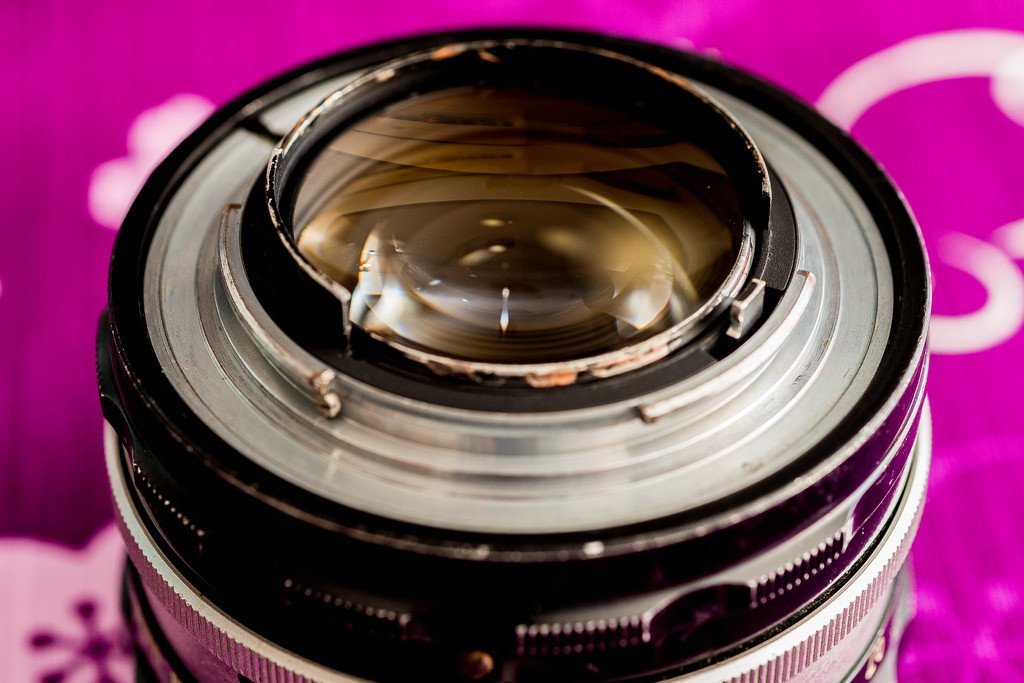
Reading up to this point, readers must assume that “non-Ai means there is no Ai” right?
After Nikon officially started using the F mount ring in 1959(the same one used now, not changed in 55 years), Nikon cameras began to implement a very interesting aperture metering system: the rabbit ears(coupling prong), the rabbit ear-like metal pieces that can be seen on the bottom of the lenses in the above images. This is why lenses back then do not have the Ai mechanisms that came later, the bottom of the lenses were flat and smooth, without any protrusions(see above image).
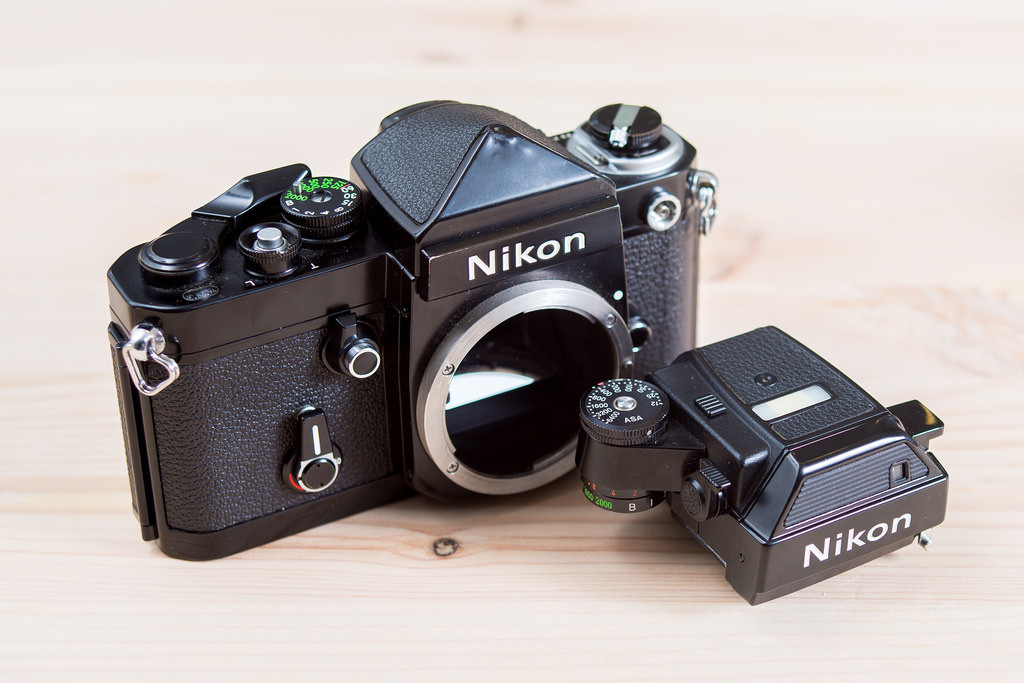
Then how were the lens back then able to tell the camera about its aperture?
There are actually two methods for that: one is to quite simply not tell it at all(cameras without the metering function), and the other method is performed using the aforementioned “rabbit ears”. Since it is complex to have an aperture metering system, not all early camera models have these mechanisms(like how most low-end DSLR these days do not have an Ai tab). For instance, the Nikon F2 seen above not only did not have aperture indexing when its using the most advanced viewfinder, it didn’t even have a metering function. A metering viewfinder has to be attached to the front of the camera for both of the metering features we are used to having. (Photographers back then were human metering systems)
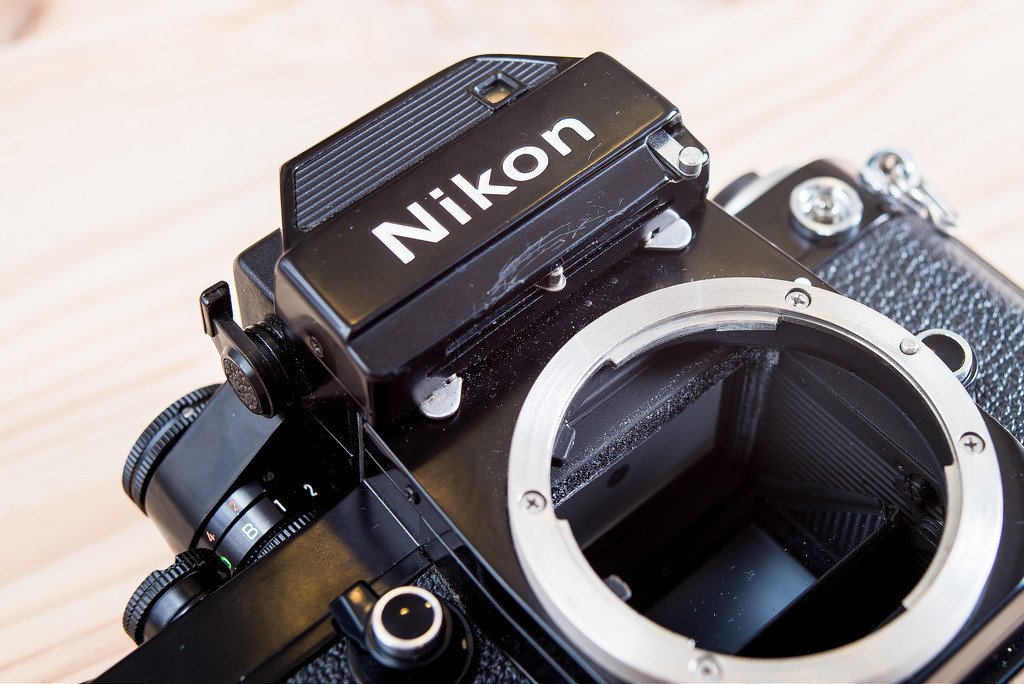
An F2 equipped with a metering viewfinder will look like the above, where a small meter tab can be seen below the Nikon logo, and this is the early Nikon Aperture indexing mechanism! When a lens is mounted, it will look like the image below:
![]()
Were you suddenly struck with a realization: Ah! So this is how the rabbit ears are used!
I believe many people would assume that the rabbit ears are there so it’s easier to adjust the aperture rings, or that it is there just as a physical indicator to the user, but there are actually very important reasons for it to be designed the way it is. There was even a whole cheaper series of lenses that came after called Series-E that removed the rabbit ears as a way to show that it was made using lower budgets. So don’t underestimate these ears, it is an important symbol with historical significance.
Now onto the last question regarding non-Ai and Ai: How do DSLRs use non-Ai lenses?
It’s not that DSLRs can’t use non-Ai, it’s just that since non-Ai lenses have a smooth rear, you would break the aperture tab on your camera if you force one onto it(therefore it can only be paired with a Nikon DF since its tab can be retracted). However, this does not mean that DSLRs absolutely cannot use a non-Ai lens. If you don’t mind customising your lens, you can actually go to one of the lens repair shops on Bo’ai road and ask them to “grind” your lens til it has an Ai structure, essentially you’re destroying the smooth rear of the lens so it can be customised to have the characteristics of an Ai lens so it can be mounted onto a modern Nikon digital camera.
Note 1: A friend of mine from a while back bought a non-Ai lens from a famous second handed lens shop in Taipei, and the shopkeeper told them that it can be directly mounted onto a DSLR. It wasn’t until I discovered the tabs on their camera being crooked that they found out they shouldn’t be doing that, I’m not quite sure how the employees from that store are trained…
Note 2: When Nikon first released their Ai lenses they also came up with official props that can turn non-Ai lenses to Ai, these lenses are called “Ai’D” on the market, but don’t confuse it with the D lens that came out after it. I’ve seen people online trying to convince others that “Ai’D” equals D lens, and that Ai is just a typo. Please, readers of my photography lessons, do not make this mistake, thank you.
Lastly, let’s discuss the difference between Ai and Ai-S!
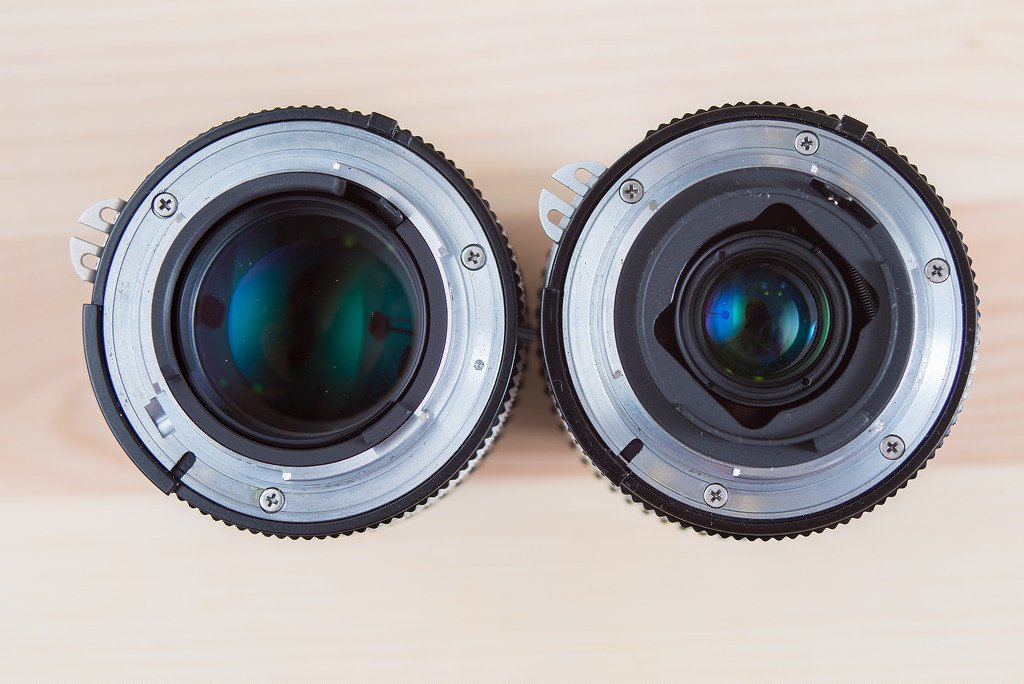
Ai-S is the result of the last revamp of manual lenses, everything that came after is automatic and marked with AF(autofocus lenses already exist during the film camera era). What exactly differentiates Ai-S and Ai then? On the left in the image above you can see an Ai-S lens, as you can see on the bottom left, around the 7’o clock direction there is an oval shaped notch that is absent in the Ai lens on the right. This notch corresponds to a pin on the camera body that is used to acquire information regarding the lens’ focal length(whether or not it is larger than 135mm).
The purpose of the Ai-S mechanism is to adapt to the “P mode (automatic exposure)” of film cameras such as the F4 and the FG so that the camera itself can automatically select a faster shutter speed for a lens with a longer focal length to prevent camera shake. Other changes of the Ai-S include changes to the range of the linear aperture, a design directed at the P mode. However these functions are only usable by cameras after F4, so older models such as the F3 or FM2 won’t be able to enjoy the benefits the Ai-S mechanism brings. Though Ai-S lenses are usually the improved version of lenses of the same focal length, with improvements on its optical properties as well. Therefore unless it is a special lens, Ai-S lens always outperform others of the same model(it out-prices them as well).
If you are interested in our articles, you can also LIKE our page:)
